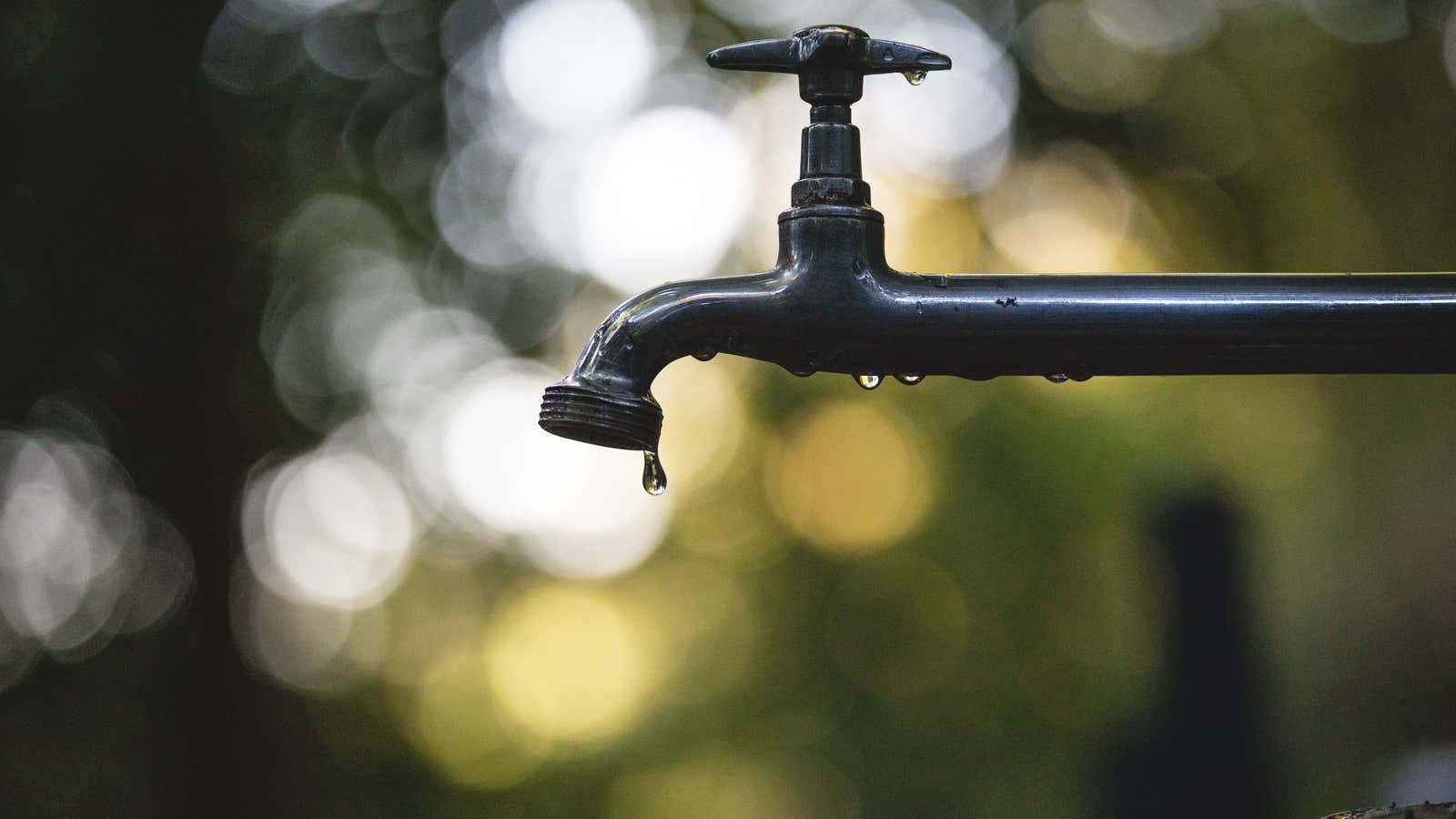In patches all over the US, an ancient layer of sediment in the Earth’s crust is rich in arsenic, a chemical element toxic to humans. And some 2 million people drawing water from private wells in the US may be getting exposed to it in levels above the legal limit, according to research published Wednesday (Oct 18) in Environmental Science & Technology.
Private water wells are common in rural America, especially in places outside the reach of municipal water systems. Around 15% of the US population uses private wells (about 43 million people total), but they’re largely unregulated. Because they aren’t covered by the Federal Safe Drinking Water Act, private wells aren’t subject to the same government contamination tests that public water systems undergo. It is entirely up to the well owner to test their water for hazards, like arsenic.
Based on a detailed assessment of where US geology is likely to create high levels of naturally-occurring arsenic, and where private wells are located, scientists from the U. Geological Survey and Centers for Disease Control estimated that around 2 million people are probably drinking it at levels higher than the legal limit of 10 parts per billion.
Arsenic is a serious toxin. Studies have shown children exposed to high levels of it have lower IQ scores. Even low levels of arsenic “may impact fetal growth and may be related to preterm birth,” the federal scientists wrote. Recent research—like this paper that studied births in Ohio—found that babies of pregnant mothers who drank arsenic at levels below the federal standard were more likely to be born with a range of problems.
Arsenic is also a recognized carcinogen; Scientists at the US Environmental Protection Agency have concluded that if 100,000 women consumed the legal limit of arsenic each day, 730 of them eventually would get lung or bladder cancer, according to the Center for Public Integrity. To compare, 50 out of every 100,000 women got lung cancer in the US in 2014, and 8 out of every 100,000 got bladder cancer.
“I jokingly say that arsenic makes lead look like a vitamin,” Joseph Graziano, a Columbia environmental health professor, told the Center for Public Integrity in 2014. “Because the lead effects are limited to just a couple of organ systems—brain, blood, kidney. The arsenic effects just sweep across the body and impact everything that’s going on, every organ system.”
In the US, the 10 ppb limit for arsenic in drinking water has been a matter of debate. The EPA lowered the limit to 10 ppb from the previous 50 ppb limit in 2001—but the EPA initially proposed to lower it to 5 ppb. The agency ultimately faced too much industry criticism that the 5 ppb standard would be prohibitively expensive for water companies to meet, according to the Center for Public Integrity, and opted for the more lenient 10 ppb instead.
Arsenic can’t be removed from water with chlorine, or by boiling. The CDC recommends private well owners distill their water or treat it with a reverse-osmosis filter. Public water utilities have a range of options for treating their water for arsenic—from reverse osmosis to a process called “coagulation and filtration.”
Natural geologic formations aren’t the only source of arsenic in water; certain pesticides contain arsenic and the chemical is also a byproduct of coal-fired power plants. Under administrator Scott Pruitt, the EPA halted the implementation of an Obama-era rule in May that was meant to lower the levels of arsenic that power plants were allowed to dump in waterways, calling it “costly.”
